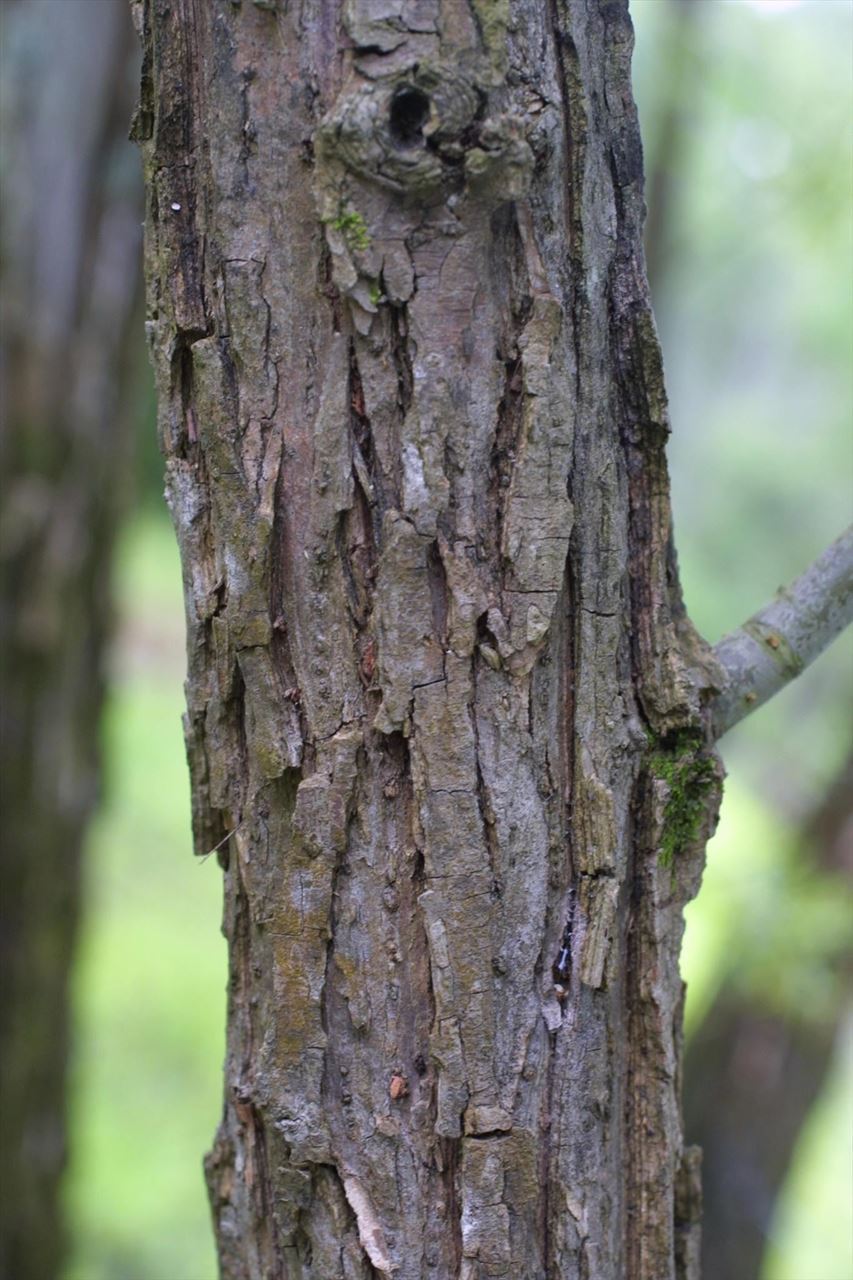Willow bark's pain-relieving and fever-reducing properties have been known for centuries when ancient civilisations would chew on the bark for rapid pain relief. The growing popularity of natural medicines has fuelled a renewed interest in willow bark. It is considered by some to be a good alternative to non-steroidal anti-inflammatory drugs (NSAIDs) like aspirin, ibuprofen or naproxen.
This is because aspirin is a synthetic derivative of the natural substance salicylic acid and salicylic acid is a active ingredient in the willow bark, in the form of salicin. Salicylic acid and related salicylates have long been common components of natural medicine, before aspirin arrived, functioning as a natural defence against common ailments today.
The first recorded use of salicylates dates back about 4,000 years to the Sumerians, who noted the pain remedies of the willow tree on early clay tablets. Ancient civilisations in Mesopotamia used the extract from willow trees to treat fever, pain, and inflammation. Both Chinese and Greek civilisations employed willow bark for medical use more than 2,000 years ago, and the Chinese also used poplar bark and willow shoots to treat rheumatic fever, colds, haemorrhages, and goitre. Hippocrates (460–370 BCE) recommended chewing on willow-tree bark to patients suffering from fever and pain, as well as the use of a tea brewed from willow bark given to women to lessen pain during childbirth. Around 100 CE the Greek physician Dioscorides prescribed willow bark as an anti-inflammatory agent.
Despite this long history, it was not until 1763 that Edward Stone of the Royal Society of London conducted one of the first clinical studies on the effects of willow-bark powder by treating patients suffering from ague (a fever thought to be caused by malaria). And approximately 100 years later the Scottish physician Thomas MacLagan studied the effects of willow powder on patients suffering from acute rheumatism, demonstrating that it could relieve fever and joint inflammation. Eventually, continued research lead to the introduction of the most well-known pain killer of all time, aspirin.
Willow bark comes from several varieties of the willow tree. The white willow and black willow are two of the most common willows that are used medicinally.

Willow Bark Benefits
The word salicin is derived from the Latin name for the willow, salix. Salicin, a white bitter-tasting powder can be obtained by aqueous extraction of mainly willow bark and leaves. Salicin is converted to salicylic acid in the body which then inhibits the activity of enzymes cyclo-oxygenase 1 (COX-1) and cyclo-oxygenase 2 (COX-2). These are the same enzymes targeted by NSAIDs to alleviate pain and inflammation. The effects of willow bark take longer than aspirin to kick in, but they tend to last longer and cause fewer adverse reactions than aspirin’s side effects.
Antioxidant compounds called polyphenolic glycosides and flavonoids are also found in willow bark. These have been shown to protect against oxidative stress and various symptoms tied to aging, such as poor physical performance, cognitive decline, etc.
Together with salicin, fragilin, salicortin and other salicylates, researchers believe that these antioxidants play a prominent role in willow bark’s therapeutic actions.
Regarding its use as a natural pain killer, most of the known benefits of willow bark are based on anecdotal observations, rather than clinical studies. Here is just some of what the current research says:
Pain Relief
Headaches
It has been shown to relieve headaches and is less likely to cause gastrointestinal side effects than synthesised pain relievers such as ibuprofen.
The consumption of willow bark may help reduce the tension from headache-related pain. It contains the chemical salicin similar to acetylsalicylic acid in aspirin. The University of Maryland Medical Centre states feeling the effects of willow bark may take longer to experience, but the effects can last longer compared to aspirin.
Those who suffer from chronic and/or recurring headaches are strongly advised to seek help from their healthcare professional.
Lower Back Pain
The current body of evidence suggests that willow bark may be most effective in treating acute low back pain.
A 2001 study published in the journal Rheumatology found in a group of nearly 200 people with low back pain, those who received willow bark showed a significant improvement in pain compared to those who received a placebo. Moreover, those who received higher doses of the herb, specifically 240 mg salicin, experienced more significant pain relief than those who received a low dose of 120 mg salicin.
In a 2016 analysis published in the journal Spine, researchers evaluated 14 previously published studies on herbal treatments for low back pain. Among their findings, the researchers reported that the bark of the white willow tree (Salix alba) consistently provided greater pain relief than a placebo.
Further research would be needed to determine how safe and effective willow bark may be in relieving low back pain.
Arthritis
Salicin in willow bark have been shown to inhibit cyclooxygenase – an enzyme responsible for inflammatory mediators like prostaglandins. Salicin will also ease the discomfort, further reducing the production of prostaglandins in the nerves and its anti-inflammatory properties help in reducing painful inflammation of the joints. It is thought that regular intake of willow bark will help to suppress the progression and onset of arthritis.
In a clinical trial published in Phytotherapy Research, a willow bark extract containing 240 milligrams (mg) of salicin daily was compared to a placebo in 78 people with osteoarthritis. After two weeks of treatment, pain scores (using the WOMAC osteoarthritis index) were reduced by 14 percent in the willow bark group compared to 2 percent in the placebo group.
However, further research is needed to determine benefits over a longer duration.
Heart Health
Low doses of aspirin are taken as a preventative as well as first aid for a heart attack as it helps to reduce the risk of internal clotting. Since the salicylates in aspirin are derived from willow bark it stands to reason this herb has the same effect on the heart as aspirin. This means it can be effective in reducing the risk of heart attacks and strokes.
Alleviates Acne
Willow bark extract can be found as an ingredient in cosmetics and personal care products due to its astringent, anti-inflammatory, and soothing properties. Salicylic acid is a natural exfoliant used in several acne treatments because it can help skin shed dead cells while clearing pores. It also contains phenolic acids, salicin, salicortin and flavonoids, tannins, and minerals, which help with skin rejuvenation.
A study published in the journal Clinical Therapeutics found mild or moderate acne can be treated with non-prescription agents such as salicylic acid. This agent can reduce the number of primary lesions and therefore, the severity of all acne-related lesions. Salicylic acid has been shown to be more superior to benzoyl peroxide in reducing acne.
Precautions
When taken in moderation, willow bark does not appear to have negative side effects. The salicin in willow bark converts to salicylic acid. Some believe that this makes it gentler on your stomach than lab-created aspirin. Too much willow bark, however, can cause stomach cramping and bleeding.
There are some people who should not use willow bark. If you have an allergy to aspirin, it’s possible to have a reaction to willow bark as well. Willow bark can also interact with certain medications, like blood thinners and beta-blockers.
Children and adolescents up to the age of 16 are generally discouraged from taking willow bark for any reason. This is because of the risk of Reye’s syndrome, a rare condition that causes brain and liver damage. Pregnant and breast-feeding women are also discouraged from taking any medication that contains salicylates. People with gastric ulcers should be especially careful with willow bark, in the same way that they would be cautious with aspirin, because too much could cause stomach bleeding.
As willow bark is similar to aspirin, it is possible to develop many of the same side effects, particularly if overused. These may include stomach upset, vomiting, dizziness, gastrointestinal bleeding, liver toxicity, and kidney impairment.
An allergic response to willow bark is also possible, especially in those with a known allergy to aspirin. On rare occasion, the allergy may lead to a potentially life-threatening condition known as anaphylaxis.
Willow bark is considered safe for short-term use. With that being said, there has been relatively little research into the long-term safety of the herbal supplement.
Drug Interactions
Willow bark may slow blood clotting and prolong bleeding time. As such, it should not be taken with anticoagulants like warfarin, antiplatelet drugs like clopidogrel, or any drugs associated with bleeding, including NSAIDs.
For the same reason, you would need to stop taking willow bark two weeks before scheduled surgery to avoid excessive bleeding. Willow bark should also not be used in haemophiliacs or people with other bleeding disorders.
Willow bark contains chemicals similar to the non-steroidal painkillers Trilisate (choline magnesium trisalicylate) and Disalcid (salsalate). Taking willow bark with either of these drugs can amplify their side effects, including stomach upset, nausea, vomiting, diarrhoea, or constipation.

Dosages for Health
Capsules
Willow bark can be purchased from health food stores in a powdered, encapsulated form. The recommended dose for pain relief is 240 milligrams a day.
Bark
The active ingredient in willow bark is salicin, but the accompanying flavonoids and plant particles might be part of what make willow bark effective. For this reason, some people prefer to actually chew on the unprocessed bark of the willow tree. It is difficult to determine how much salicin you are getting from each piece of bark, so this method of consumption should be approached with caution.
Liquid
Willow bark can also be found in a distilled tincture form. Taking a drop or two per day for pain relief (up to 2 mls) can work as an anti-inflammatory and pain relief substitute for aspirin.
Tea
Some health food stores sell willow bark tea, advertising it as a pain reliever and anti-inflammatory. Steep willow bark tea for two to three minutes in hot water. When consuming willow bark in this form, it’s hard to tell how much salicin you are getting in each serving of tea.
Topical
Willow bark can be used topically. Since it isn’t absorbed digestively, topical willow bark is a good alternative for those who commonly experience stomach ulcers. However, topical use can be harsh and cause skin irritation.
How to Make Willow Bark Tea
Bark from the white willow tree can be gathered and used to make tea or “bark concoctions.” About 50 - 150g can be consumed up to several times daily, depending on the strength.
1. Use about one tablespoon of willow bark per cup of water.
2. Boil the required amount in water for about 10 minutes.
3. After allowing the tea to cool, it’s best to drink it with a meal, which will reduce the chance of experiencing an upset stomach.
4. Most people can consume 1–3 cups of willow bark tea per day. Drink one cup and wait several hours before taking another dose to make sure you don’t react poorly.
To Sum Up…
The willow tree is a symbolic medicinal plant that has been associated with the discovery of aspirin. Even though it is used widely, very few clinical trials have been done to verify the effectiveness of willow bark. Preliminary studies do show that there are some health benefits, and that certain species of willow contain higher concentrations of salicin and flavonoids than others. In the studies that have been done, the risks and side effects seem fairly minimal. And there are centuries of study and use of aspirin, which gets its active ingredient from willow bark.
Willow bark benefits include lowering inflammatory responses that contribute to chronic diseases, fighting pain and reducing fevers. Whether in extract or tea form, willow bark can provide relief to those suffering from back pain, recurring headaches, muscle pains, and arthritis symptoms. Some even say it can help with weight loss and menstrual cramps. However, more research is needed to fully understand how it differs from aspirin. While it may be an effective alternative to aspirin for some, talk to your doctor before choosing to take willow bark.
Although it’s generally safe, willow bark extract taken in high doses can cause side effects including increased bleeding, skin rashes, itching and an upset stomach. Allergic responses are also possible among individuals who are sensitive to salicin.
Sources
https://www.sciencehistory.org/distillations/aspirin-turn-of-the-century-miracle-drug
https://www.healthline.com/health/willow-bark-natures-aspirin#side-effects
https://www.verywellhealth.com/white-willow-bark-89085
https://www.sciencedirect.com/science/article/pii/S13196103 10000578
https://www.medicaldaily.com/miracle-tree-6-health-benefits-willow-bark-get-you-chomping-bit-330070
https://www.indigo-herbs.co.uk/natural-health-guide/benefits/white-willow-bark
https://draxe.com/nutrition/white-willow-bark/
